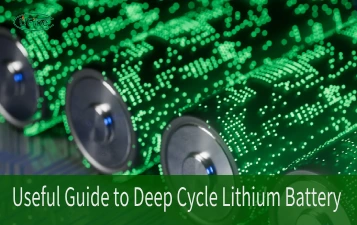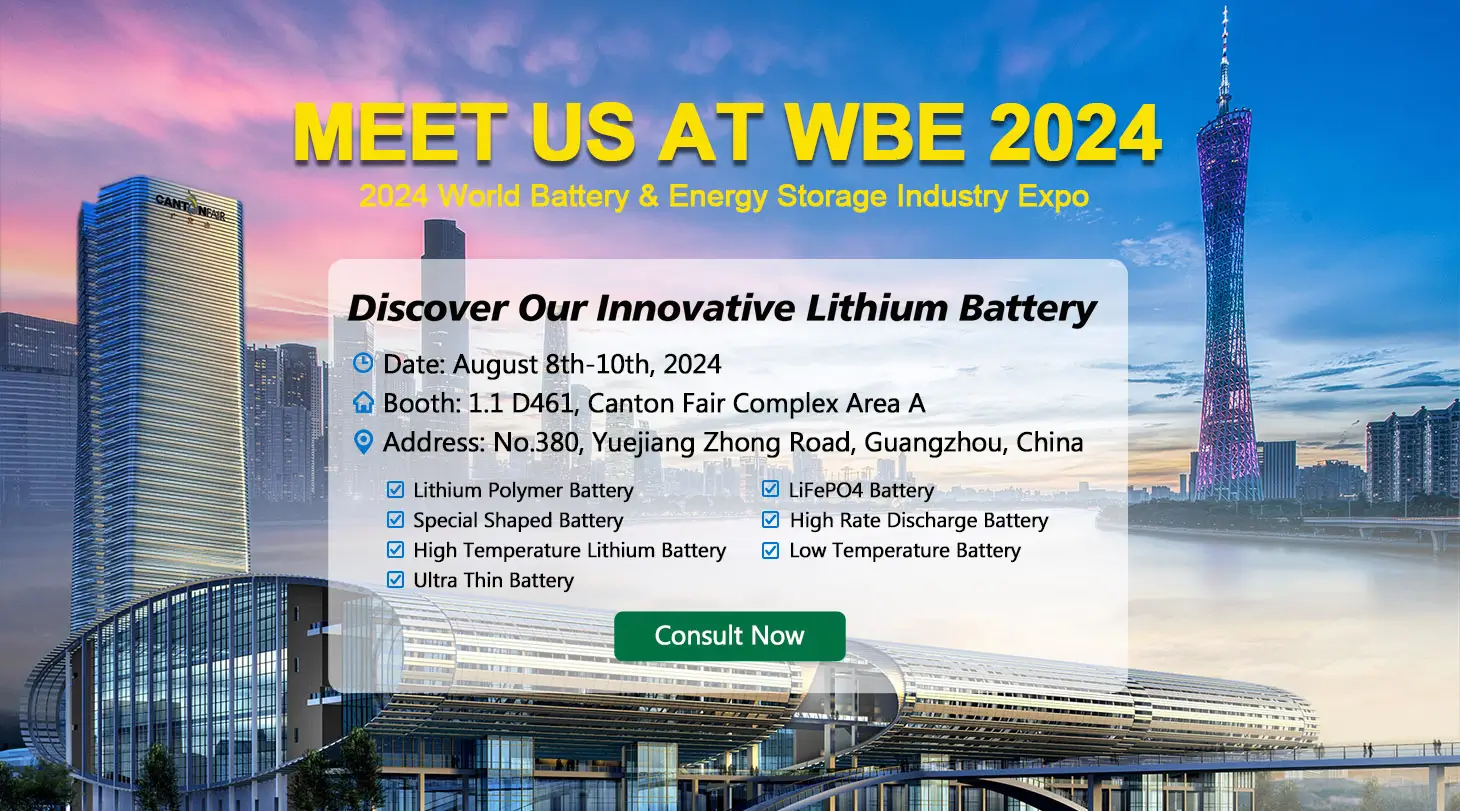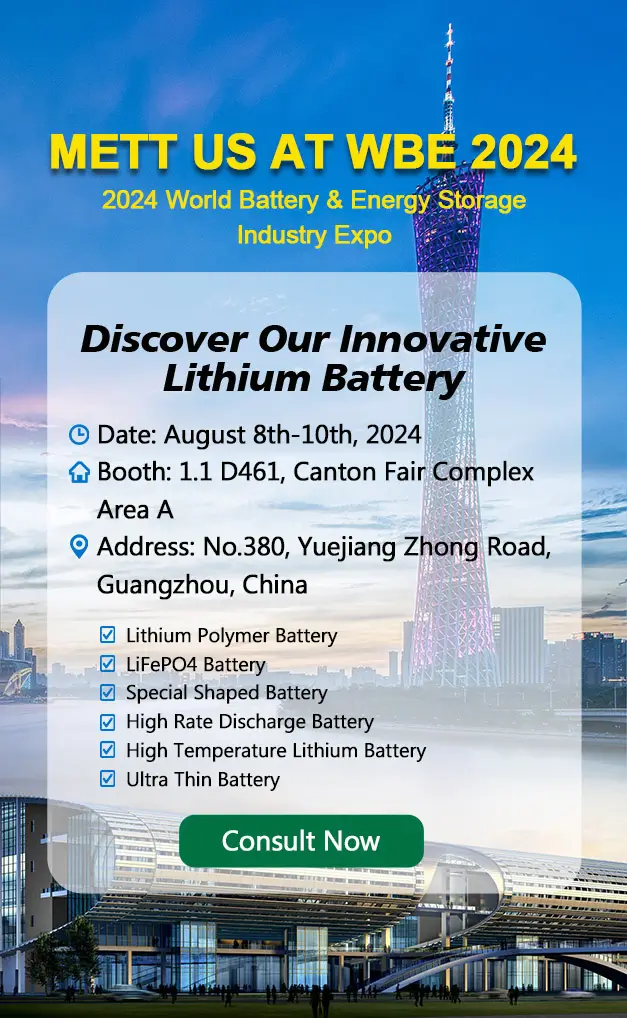Comparing LiFePO4 and Lithium-ion Polymer batteries is an essential journey into the realm of energy storage solutions. This comprehensive article delves deep into the core differences, strengths, and weaknesses of these two prominent battery technologies.
Part 1. What are LiFePO4 batteries?
LiFePO4 battery
A lithium iron phosphate battery is a lithium-ion battery with lithium iron phosphate as the cathode material. Lithium battery cathode materials are mainly lithium cobaltate, lithium manganate, lithium nickelate, ternary materials, lithium iron phosphate, and so on. In a lithium iron phosphate battery that is charging, the positive electrode in the lithium-ion Li is through the polymer diaphragm to the negative electrode; in the discharge process, the negative electrode in the lithium-ion Li is through the diaphragm to the positive electrode relocation.
Part 2. LiFePO4 battery advantages
Long life
The number of cycles is more than 2000 times. Under the same conditions, lithium iron phosphate batteries can be used for 7 to 8 years.
Safe to use
Lithium iron phosphate batteries have undergone stringent safety testing and will not burst even in traffic accidents.
Fast charging
Using a special charger, 1.5C charging for 40 minutes can fill the battery.
High-temperature resistance
Lithium iron phosphate battery thermal wind value can reach 350 to 500 degrees Celsius.
Large capacity
The battery is often in full, not discharged under work conditions; the capacity will be rapidly below the rated capacity value; this phenomenon is called the memory effect. Like nickel-metal hydride, nickel-cadmium batteries have memory, and lithium-iron phosphate batteries do not have this phenomenon. The battery, regardless of what state, can be charged with the use of the battery, with no need to be discharged and then charged.
Lightweight
The volume of a lithium iron phosphate battery with the same specification capacity is 2/3 of the volume of a lead-acid battery, and the weight is 1/3 of the lead-acid battery.
Part 3. LiFePO4 battery disadvantages
Poor low-temperature performance:Around -20 degrees Celsius, the battery attenuation will reach about 55%.
Low energy density:Every time it reaches 150wh/kg, the battery volume/weight will be larger.
Long battery life:But the battery pack life is short, usually around 500 times.
Expensive:High production cost.
Unstable battery process performance:Poor performance consistency.
Part 4. Lithium-ion battery
The lithium-ion battery is a kind of secondary battery that uses lithium-containing compounds as the positive electrode and realizes charging and discharging through the round-trip shedding and embedding of lithium ions between the positive and negative electrodes of the battery during the charging and discharging process. Lithium-ion batteries are composed of a positive electrode, a negative electrode, an electrolyte, and a diaphragm.
Part 5. Lithium-ion battery advantages
High voltage
The working voltage of a single cell is as high as 3.7-3.8V (lithium iron phosphate is 3.2V, which is three times that of Ni-Cd and Ni-MH batteries.
Large specific energy
The actual specific energy of 555Wh/kg, i.e., the material can reach 150mAh/g or more than 3-4 times the specific capacity of Ni-Cd, 2-3 times the Ni-MH, has been close to its theoretical value of about 88%
Long cycle life
Generally, it can reach more than 500 times, and even more than 1000 times, lithium iron phosphate can reach 8000 times. For small-current discharge appliances, the battery life will increase the competitiveness of the appliances.
Good safety performance
No harm, no memory effect. As the predecessor of Li-ion lithium batteries, lithium metal dendrites are easy to form short-circuit, reducing its field of application: Li-ion does not contain cadmium, lead, mercury, and other environmentally polluting elements; part of the process (such as sintered, Ni-Cd batteries exist in the “memory effect,” a serious constraint on the use of batteries, but Li-ion does not have this problem. Ion does not have this problem.
Small self-discharge
The self-discharge rate of Li-ion is about 2% after one month of storage at room temperature, which is much lower than 25-30% of Ni-Cd and 30-35% of Ni-MH.
Fast charging
1C charging capacity can reach more than 80% of the nominal capacity in 30 minutes, and phosphorus-iron batteries can reach 90% of the nominal capacity in 10 minutes.
Operating temperature
The working temperature is -25~45°C, and with the improvement of electrolyte and positive electrode, it is expected to be widened to -40~70°C. Non-pollution: free of heavy metals and toxic substances, it is a real green energy.
Part 6. Lithium-ion battery disadvantages
High internal impedance
Because the electrolyte of lithium-ion batteries is an organic solution, its conductivity is much smaller than that of nickel-cadmium batteries; nickel-metal hydride batteries in water deep-soluble electrolyte, so the internal impedance of lithium-ion batteries is about ten times larger than that of nickel-cadmium batteries or nickel-metal hydride batteries.
Large change in operating voltage
When the battery is discharged to 80% of its rated capacity, the voltage change of the NiCd battery is very small (about 20%). In comparison, the voltage change of the Li-ion battery is very large (about 40%). This is a serious disadvantage for battery-powered equipment. However, due to the large variation in discharge voltage of lithium-ion batteries, it is also easy to detect the battery’s remaining charge accordingly.
Faster decline
At higher discharge rates, the capacity decline is also greater. With a discharge rate of 0.5C, lithium-ion batteries’ and nickel-cadmium batteries’ capacity reduction is comparable. Still, with a high discharge rate (> 1C), lithium-ion battery capacity is seriously reduced. Therefore, lithium-ion batteries cannot be discharged at high currents; the maximum discharge rate is 1 C. When the discharge rate exceeds 1 C, the capacity and life of the battery will be reduced.
Part 7. Differences between LiFePO4 and lithium-ion polymer batteries
Chemistry and Composition
LiFePO4 batteries, also known as lithium iron phosphate batteries, are recognized for their iron phosphate cathode, offering greater stability and thermal safety. In contrast, Lithium Ion Polymer batteries utilize a polymer electrolyte and various cathode materials, including cobalt, manganese, or nickel-based compounds. This variation in composition influences their performance and safety features significantly.
Energy Density
Lithium-ion polymer batteries generally boast higher energy densities than LiFePO4 batteries. This superior energy density means they can store more energy per unit volume or weight. This advantage in energy density makes Lithium Ion Polymer batteries more suitable for applications requiring lightweight and compact power sources, like consumer electronics and portable devices.
Safety and Stability
LiFePO4 batteries inherently possess better stability and safety due to their composition, making them less prone to thermal runaway or overheating issues. On the contrary, Lithium Ion Polymer batteries might have higher risks of thermal issues if not handled or charged properly, necessitating more sophisticated safety mechanisms to prevent potential hazards.
Part 8. Performance and application
Charge and discharge cycles
LiFePO4 batteries generally offer a higher number of charge and discharge cycles compared to Lithium Ion Polymer batteries. They tend to retain their capacity over numerous cycles, making them suitable for applications requiring frequent charging and discharging.
Voltage ratings
LiFePO4 batteries typically have lower nominal voltage ratings than Lithium Ion Polymer batteries. Their nominal voltage may range from 3.2V to 3.3V per cell, whereas Lithium Ion Polymer batteries often have higher nominal voltages.
Temperature sensitivity
LiFePO4 batteries are generally less sensitive to temperature fluctuations than Lithium Ion Polymer batteries. They tend to perform more consistently across a broader temperature range, making them more suitable for environments with varying temperature conditions.
Part 9. FAQs
-
What is better lithium-ion or LiFePO4?
The choice depends on the specific application; lithium-ion batteries offer high energy density, while LiFePO4 batteries prioritize safety, stability, and longevity. -
Is LiFePO4 a lithium polymer battery?
No, LiFePO4 (lithium iron phosphate) is a specific lithium-ion battery chemistry known for its enhanced safety and stability, not necessarily a lithium polymer battery. -
Can a lithium-ion charger charge a LiFePO4 battery?
Using a lithium-ion charger for a LiFePO4 battery is not recommended as the voltage and charging profiles differ; using an appropriate charger for LiFePO4 batteries is advisable. -
Can you overcharge a LiFePO4 battery?
LiFePO4 batteries are more tolerant of overcharging compared to other lithium-ion chemistries, but it’s still important to avoid prolonged overcharging to maximize their lifespan and safety. -
What is the lifespan of a LiFePO4 battery?
A well-maintained LiFePO4 battery can last around 2000 to 7000 charge cycles, significantly longer than many other lithium-ion batteries, owing to its more stable chemistry and enhanced cycle life.
Related Tags:
More Articles

Overview of Deep Cycle Lithium Battery
In this article, we explore the life, voltage, capacity, and charging considerations of deep cycle lithium batteries.
How Long do Lithium Batteries Last?
How long do lithium batteries last? we will explore the factors that influence the lifespan of lithium batteries and provide insights into their longevity.
How to Choose the Best LiFePO4 Battery?
Choose LiFePO4 batteries for superior performance, safety, and versatility in EVs, UPS, and backup power. This guide helps you make informed decisions.
Get 12v Lithium Car Battery As a Power Source for the Ride
Make the right choice for your vehicle's battery needs by installing a 12 volt lithium car battery. You will enjoy maintenance-free longevity with this change.
Everything About A Small Lithium Ion Battery
Discover the features, uses & future potential of a small lithium ion battery. A compact and tiny powerhouse ideal for smartphones, wearables, drones & more.





